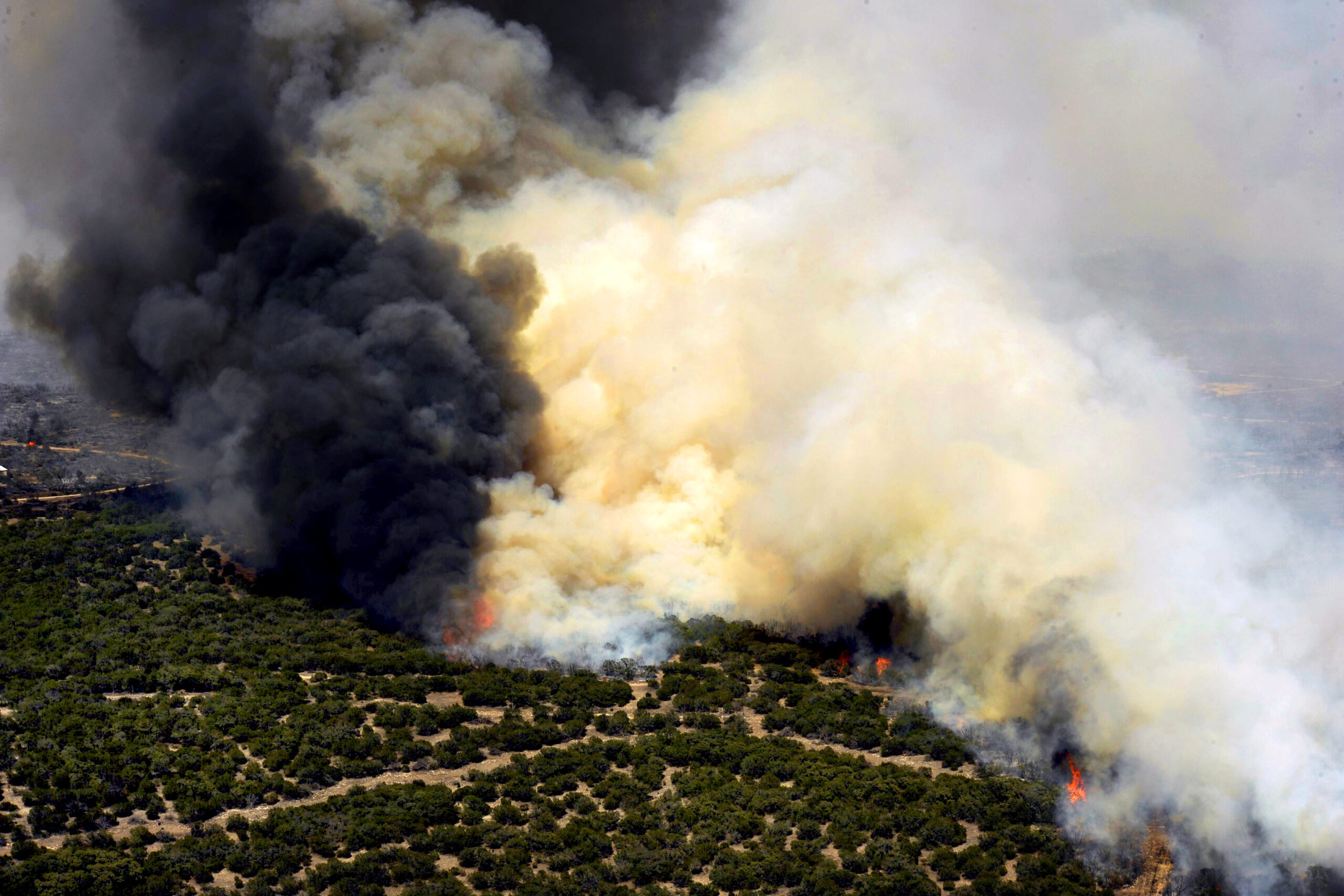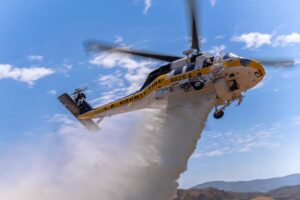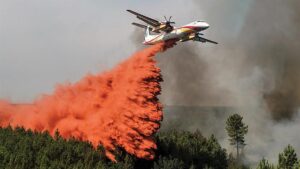
The Oasis wildfire burns in West Texas as fire fighting crews try to contain it, April 26. Wildfires have spread across various parts of Texas and have burned more than 1,000 square miles of land.
By: Blake Schrader
In the aftermath of devastating wildfires, including the largest in state history, ravaging the Panhandle region, Texas’ chief emergency manager advocated for the establishment of a dedicated firefighting aircraft division. Nim Kidd, head of the Texas Division of Emergency Management, addressed a panel of lawmakers in Pampa, underscoring the need for enhanced state capabilities in managing such catastrophes.
The sentiment echoed by Kidd resonated with local landowners, who expressed doubts over the state’s current capacity to handle such crises effectively. The hearings held in Pampa aimed to provide a platform for victims to voice their concerns, highlighting the urgency of the issue.
Representative Ken King emphasized the statewide ramifications of the wildfires, stressing the imperative to prevent future occurrences through comprehensive action. The ongoing panel discussions delve into the root causes of the wildfires, resource allocation, and the efficacy of disaster preparedness measures.
In the absence of a dedicated fleet of firefighting aircraft, Texas heavily relies on contractors, a reliance that was underscored during the recent crisis. With many aircraft undergoing maintenance when the fires broke out, the state faced critical delays in response efforts.
Kidd proposed the establishment of a state-owned firefighting air force comprising up to six aircraft, acknowledging the challenges and the time required for implementation. Despite the envisioned state initiative, Texas would continue to utilize private contracts as a stopgap measure.
However, skepticism persists among landowners and community members regarding the feasibility of a state-owned firefighting air force. Concerns were raised about the effectiveness of state-led efforts, coupled with issues of communication between local volunteer fire departments and government agencies.
As the hearings progress, stakeholders emphasize the urgent need for coordinated action and enhanced communication infrastructure to mitigate future wildfire disasters. The path forward demands a collaborative approach, ensuring the safety and resilience of Texas communities in the face of escalating wildfire threats.




